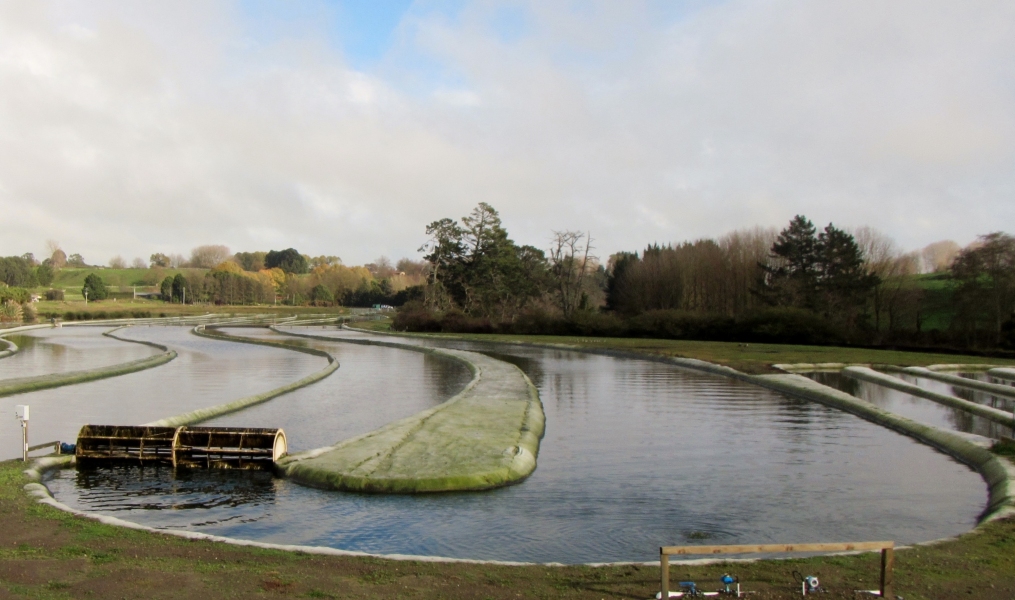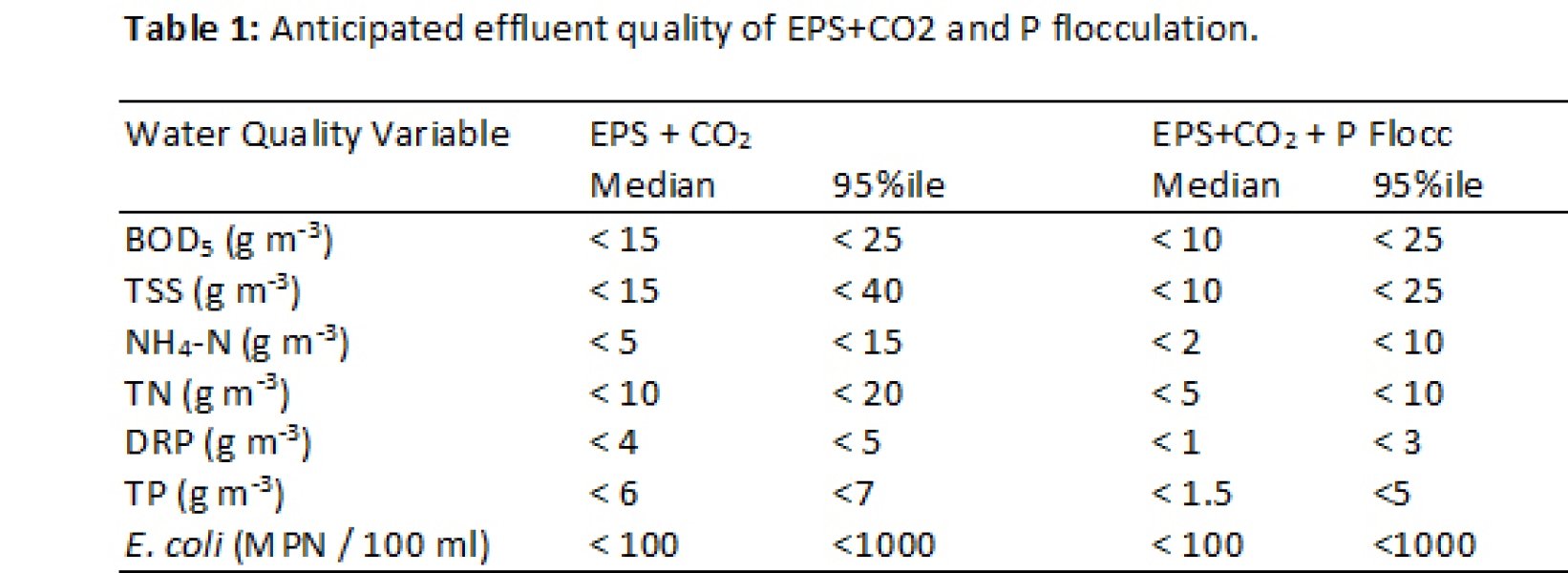NIWA and Waipa District Council are working together to demonstrate the use of enhanced pond systems (EPS) to achieve cost-effective, efficient wastewater treatment.
For more than 30 years, oxidation ponds have been used to treat wastewater in most small and medium-sized communities. The conventional ponds work well at removing suspended solids and lessening biochemical oxygen demand. They are cost effective and require little maintenance. However when it comes to removing pathogens and nutrients, they are highly inconsistent.
Scientists at NIWA have expertise in pond design and operation which maximises algal productivity and nutrient removal. Wastewater quality can be further enhanced in high rate algal ponds (HRAP) through the modification of pond depth (Sutherland et al 2014, Water Research 53: 271-281).
Pond depth, has a significant effect on algal productivity and amount of wastewater treated. Deep ponds (400 mm) out-perform shallow ponds (200mm deep). This finding is in contrast with current practises of operating ponds as shallow as possible.
NIWA and the Waipa council are working at Cambridge wastewater treatment plant where two one hectare high rate algal ponds have been constructed. These are being used to demonstrate the complete pond treatment process, in particular how the addition of CO2 enhances algal growth for improved treatment. Resulting in low effluent nutrient concentrations.
The typical median effluent quality and algal productivity (see table to the right) are expected to exceed current and meet future consent conditions. Actual performance of the ponds will be verified during the next two years of research, and if proven successful, EPS could be applied to upgrade the whole of the treatment plant. The site will be used as an educational facility for pond-based treatment and natural wastewater treatment processes.



